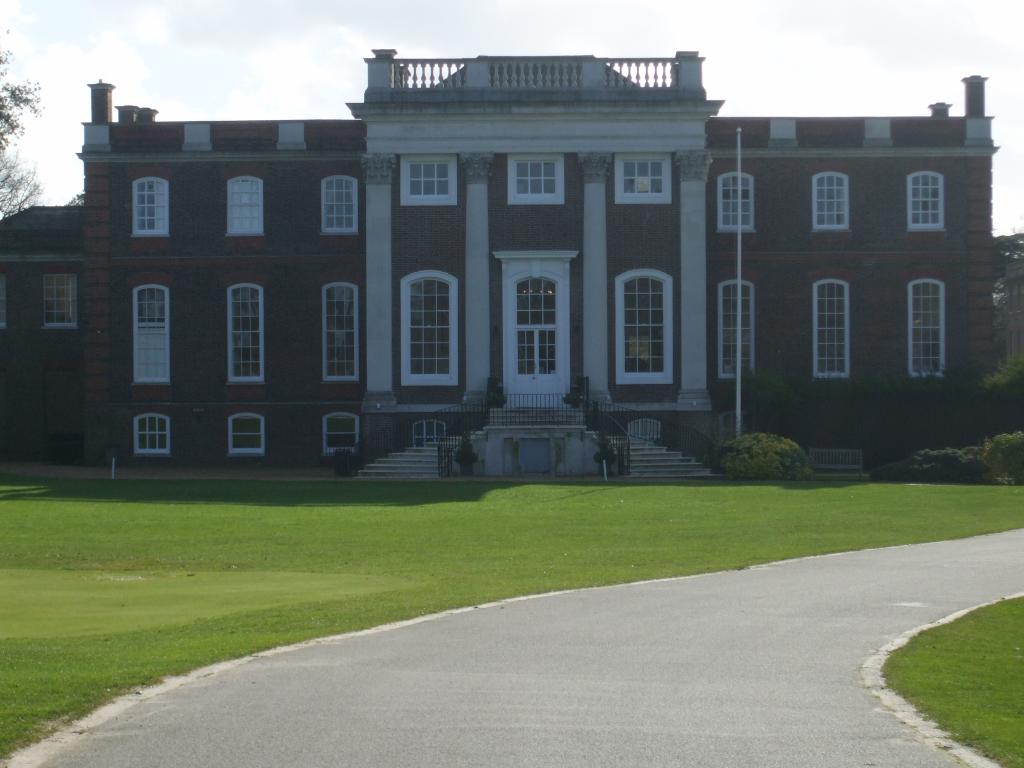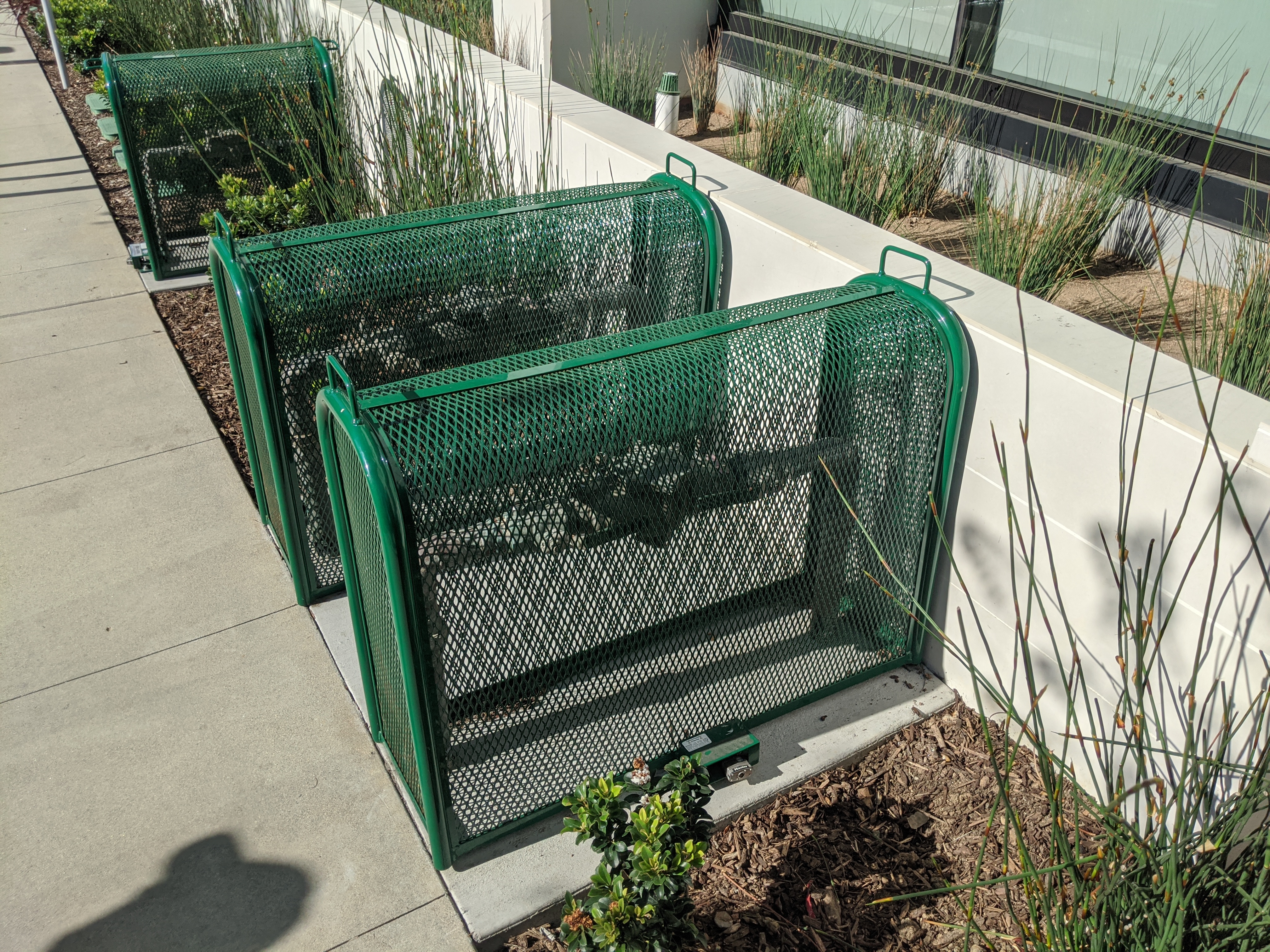|
Sudbrook (stream)
Sudbrook and its tributary, the Latchmere stream, are north-flowing streams in London, England, that drain northern Kingston upon Thames and the eastern extreme of Ham, London, Ham following a meander scar in a Fluvial terrace, terrace; the upper part of the Sudbrook drains a narrow vale in Richmond Park's southern corner into the Tideway, tidal Thames. Sudbrook The Sudbrook (from 'South brook') rises at the small pond south of ''Dann's Pond'', at about elevation, in the far south of Richmond Park, flowing boxing the compass, NNW to Ham Gate. It forms a small valley, Ham Dip, and has been dammed and enlarged in two places to form 'Ham Dip Pond' and 'Ham Gate Pond', first mapped in 1861 and 1754 respectively. These were created for the watering of deer. Both saw restoration including de-silting, completed in 2013. It drains the western escarpment of the hill that, to the east, forms part of the catchment of Beverley Brook and, to the south, the Hogsmill River. The Sudbrook is ... [...More Info...] [...Related Items...] OR: [Wikipedia] [Google] [Baidu] |
Petersham, London
Petersham is a village in the London Borough of Richmond upon Thames on the east of the bend in the River Thames south of Richmond, London, Richmond, which it shares with neighbouring Ham, London, Ham. It provides the foreground of the scenic view from Richmond, London, Richmond Hill across Petersham Meadows, with Ham House further along the river. Other nearby places include Twickenham, Isleworth, Teddington, Mortlake, and Roehampton. History Petersham appears in Domesday Book (1086) as ''Patricesham''. It was held by Chertsey Abbey. Its assets were: 4 hide (unit), hides; 1 church, 5 ploughs, 1 fishery worth 1,000 eels and 1000 lampreys, of meadow. It rendered £6 10s 0d. Archibald Campbell, 3rd Duke of Argyll, Archibald Campbell, later 3rd Duke of Argyll and Earl of Islay, was born at Ham House in 1682. He went on to found the Royal Bank of Scotland in Edinburgh in 1727. The explorer George Vancouver retired to Petersham, where he wrote George Vancouver#Works by Geor ... [...More Info...] [...Related Items...] OR: [Wikipedia] [Google] [Baidu] |
Hogsmill River
The Hogsmill River in Surrey and Greater London, England, is a small chalk stream tributary of the River Thames. It rises in Ewell and flows into the Thames at Kingston upon Thames on the lowest non-tidal reach, that above Teddington Lock. The river is long and has a catchment area of about . Nearby land was formerly flood-meadows; following improvements it is now mostly sports grounds, a sewage treatment works and green space, save for Kingston and Epsom town centres. It is a habitat of many animals, fish and insects. The 12th-century Clattern Bridge, one of the oldest road bridges in England, crosses the river in the southwest of Kingston town centre. The Coronation Stone, now sited close to the river in Kingston, is believed to have been used for the coronation of Saxon kings in the 10th century. It was used as a horse mounting block until 1850 when it was mounted on a plinth in the town centre. The river has five tributaries: Green Lanes Stream, Ewell Court Stream, ... [...More Info...] [...Related Items...] OR: [Wikipedia] [Google] [Baidu] |
Mere (lake)
A mere is a shallow lake, pond, or wetland, particularly in Great Britain and other parts of western Europe. Derivation of the word Etymology The word ''mere'' is recorded in Old English as ''mere'' ″sea, lake″, corresponding to * Old Saxon ''meri'', * Old Low Franconian ''*meri'' (Dutch ''meer'' ″lake, pool″, Picard ''mer'' ″pool, lake″, Northern French toponymic element ''-mer''), * Old High German ''mari'' / ''meri'' (German ''Meer'' ″sea″, but also '' Maar'' ″circular lake″), * Goth. ''mari-'', ''marei'', * Old Norse ''marr'' ″sea″ (Norwegian ''mar'' ″sea″, Shetland Norn ''mar'' ″mer, deep water fishing area″, Faroese ''marrur'' ″mud, sludge″, Swedish place name element ''mar-'', French ''mare'' ″pool, pond″). They derive from reconstituted Proto-Germanic ''*mari'', itself from Indo-European ''*mori'', the same root as ''marsh'' and ''moor''. The Indo-European root ''*mori'' gave also birth to similar words in other European languages: ... [...More Info...] [...Related Items...] OR: [Wikipedia] [Google] [Baidu] |
Old English
Old English ( or , or ), or Anglo-Saxon, is the earliest recorded form of the English language, spoken in England and southern and eastern Scotland in the Early Middle Ages. It developed from the languages brought to Great Britain by Anglo-Saxon settlers in the mid-5th century, and the first Old English literature dates from the mid-7th century. After the Norman Conquest of 1066, English was replaced for several centuries by Anglo-Norman language, Anglo-Norman (a langues d'oïl, type of French) as the language of the upper classes. This is regarded as marking the end of the Old English era, since during the subsequent period the English language was heavily influenced by Anglo-Norman, developing into what is now known as Middle English in England and Early Scots in Scotland. Old English developed from a set of Anglo-Frisian or Ingvaeonic dialects originally spoken by Germanic tribes traditionally known as the Angles (tribe), Angles, Saxons and Jutes. As the Germanic settlers ... [...More Info...] [...Related Items...] OR: [Wikipedia] [Google] [Baidu] |
Laches (equity)
In common-law legal systems, laches ( , ; Law French: , , from ) is a lack of diligence and activity in making a legal claim, or moving forward with legal enforcement of a right, particularly in regard to equity (law), equity. It is an unreasonable delay that can be viewed as prejudicing the opposing party. When asserted in litigation, it is an equity defense, that is, a defense to a claim for an equitable remedy. It is often understood in comparison to a statute of limitations, a statutory defense, which traditionally is a defense to a claim "at law". The person invoking laches is asserting that an opposing party has "slept on its rights", and that, as a result of this delay, circumstances have changed (witnesses or evidence may have been lost or no longer available, etc.), such that it is no longer a just resolution to grant the plaintiff's claim. Laches is associated with the maxim of equity: "Equity aids the vigilant"not those who sleep on their rights. Put another way, f ... [...More Info...] [...Related Items...] OR: [Wikipedia] [Google] [Baidu] |
Old French
Old French (, , ; ) was the language spoken in most of the northern half of France approximately between the late 8th [2-4; we might wonder whether there's a point at which it's appropriate to talk of the beginnings of French, that is, when it was deemed no longer make to think of the varieties spoken in Gaul as Latin. Although a precise date can't be given, there is a general consensus (see Wright 1982, 1991, Lodge 1993) that an awareness of a vernacular, distinct from Latin, emerged at the end of the eighth century.] and mid-14th centuries. Rather than a unified Dialect#Dialect or language, language, Old French was a Dialect cluster, group of Romance languages, Romance dialects, Mutual intelligibility, mutually intelligible yet Dialect continuum, diverse. These dialects came to be collectively known as the , contrasting with the , the emerging Occitano-Romance languages of Occitania, now the south of France. The mid-14th century witnessed the emergence of Middle French, the lang ... [...More Info...] [...Related Items...] OR: [Wikipedia] [Google] [Baidu] |
Petersham Hole
The Petersham Hole was a sink hole caused by subsidence of a sewer which forced the total closure of the A307 road in Petersham in the London Borough of Richmond upon Thames in 1979–80. It caused long-term disruption to traffic in the surrounding area and significant direct and indirect costs. Collapses The affected area comprised elements of the culverted Sudbrook stream, a minor tributary of the Thames, with a catchment extending south to Kingston, and foul sewer serving much of the Petersham area including four nearby schools. The culvert dated from 1920–22 and the foul sewer from 1890. An initial collapse occurred in June 1978 in a section of outfall pipe in River Lane (), off the main A307. The lane is prone to tidal flooding and the outfall is protected by a flap valve. The damage proved to be sufficiently extensive to justify a temporary repair and letting a contract for permanent replacement of a long section. In February 1979, a further collapse occurred 100 m ... [...More Info...] [...Related Items...] OR: [Wikipedia] [Google] [Baidu] |
Ford (crossing)
A ford is a shallow place with good footing where a river or stream may be crossed by wading, on horseback, or inside a vehicle getting its wheels wet. A ford may occur naturally or be constructed. Fords may be impassable during high water. A low-water crossing is a low bridge that allows crossing over a river or stream when water is low but may be treated as a ford when the river is high and water covers the crossing. The word ''ford'' is both a noun (describing the water crossing itself) and a verb (describing the act of crossing a ford). Description A ford is a much cheaper form of river crossing than a bridge, and it can transport much more weight than a bridge, but it may become impassable after heavy rain or during flood conditions. A ford is therefore normally only suitable for very minor roads (and for paths intended for walkers and horse riders etc.). Most modern fords are usually shallow enough to be crossed by cars and other wheeled or tracked vehicles (a proce ... [...More Info...] [...Related Items...] OR: [Wikipedia] [Google] [Baidu] |
A307 Road
A3, A03 or A.III may refer to: * A3 paper, a paper size defined by ISO 216 Biology * A3 regulatory sequence, a sequence for the insulin gene * Adenosine A3 receptor, a human gene * Annexin A3, a human gene * ATC code A03 ''Drugs for functional gastrointestinal disorders'', a subgroup of the Anatomical Therapeutic Chemical Classification System * Brachydactyly type A3, a disease * British NVC community A3 (Spirodela polyrhiza - Hydrocharis morsus-ranae community), a British Isles plants community * Gibberellin A3, a plant hormone * HLA-A3, a Human MHC Serotype HLA-A * Subfamily A3, a rhodopsin-like receptors subfamily * Urea transporter A3, a trans-membrane protein Games * '' A3!'', a Japanese video game and multimedia franchise * A3 - Assault on the Aerie of the Slave Lords, a 1981 module for the Dungeons & Dragons fantasy role-playing game * Alpha Trion, as the former name of this character from the Transformers Series * Bird's Opening (A03), in chess, by the Encycl ... [...More Info...] [...Related Items...] OR: [Wikipedia] [Google] [Baidu] |
Backflow (plumbing)
Backflow is a term in plumbing for an unwanted flow of water in the reverse direction. It can be a serious health risk for the contamination of potable water supplies with foul water. In the most obvious case, a toilet flush cistern and its water supply must be isolated from the toilet bowl. For this reason, building codes mandate a series of measures and backflow prevention devices to prevent backflow. Causes Backflow occurs for one of two reasons, either ''back pressure'' or ''back siphonage''. ''Back pressure'' is the result of a higher pressure in the system than in its supply, i.e. the system pressure has been ''increased'' by some means. This may occur in unvented heating systems, where thermal expansion increases the pressure. ''Back siphonage'' is the result of supply pressure being ''lowered'' below that of the system. This may occur when a supply is interrupted or drained down. Risk of contamination The precise measures required to prevent backflow depend on th ... [...More Info...] [...Related Items...] OR: [Wikipedia] [Google] [Baidu] |





